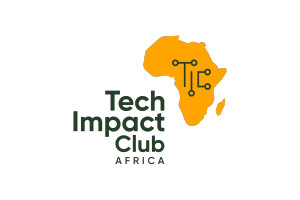
People are aware that there is a lot of ageism in the tech world. They feel that older people or anyone who doesn’t fit into that young, bubbly attitude cannot be appreciated or taken seriously. It’s no secret that the tech industry can be a bit discriminatory towards older workers.
As employers face increased competition for skilled positions, they are grappling with ageism that prevents them from hiring top talent, even if those candidates hold leadership positions and have transferable experience from previous careers. Job ads for tech roles are often worded in a way that suggests an age bias. Developers who are over 40 years old are often overlooked to hire. They believe that they are set in their ways and will not learn new skills. However, a lot of older workers have valuable experience. They have been trained to follow rules and do as they’re told, but now are directed by intuition and creativity.
“A recent survey by CWJobs suggests that tech workers can start to experience ageism as early as 29 compared to an average of 41 in other industries. In a field where most employees tend to be in the 20s, 30s and 40s, a person in their 50s can’t help but stand out.” – Rob Doyle, October 1, 2020

Older developers are often worried about their career prospects and the focus on their age can further heighten these concerns. With an increase in the average age of the workforce, older tech applicants are being overlooked. For older developers, finding a new job is a challenge. This means that many older developers are forced into sticking with jobs they’re not entirely happy with or even stop working for a while and take a hiatus from their career.
“Ageism in tech is clearly an issue, with 76 percent of all respondents saying it exists in their industry. Not surprisingly, Baby Boomers sense they’re most at-risk, with 68 percent feeling discouraged to apply due to their age versus 40 percent of Gen Xers and only 31 percent of Millennials. Further, one in every four Boomers reports having been refused a promotion solely because of their age.” – Dice Diversity and Inclusion Report, 2018
This isn’t just bad for older developers who are down on their luck, struggling to get by. It also doesn’t do much for younger developers who are being treated as disposable assets rather than assets to be nurtured. Many employers think that only young developers are capable of the delivery they want. They are of the opinion that the optimal return is young kids. They burn them out, get rid of them, replace them.They have a harmful belief that “kids deliver for us” and “kids are easier to manage”
Young developers are a hot commodity in the tech market… and not entirely for the best intentioned purposes. They most certainly would not demand wages commensurate with their skill set and the arduous deliverables forced on them like their experienced counterparts who know the value they offer would.
What To Do? Leverage Their Strengths
Age-diversity is a welcome step towards creating a more balanced tech industry. It’s a catalyst for collaborative working, and brings talents, knowledge, skills, and experience that are needed in any company trying to stay relevant. Diverse teams are proven to have a higher ROI.
As role models and mentors, older developers can work hard to create a safe and supportive environment for the next generation. Older developers have been around the block a time or two. They have the experience to tackle complex problems quickly and efficiently. Their vast experience and knowledge make them a valuable resource to any company.
Younger developers offer a unique perspective and are more energetic. They often bring a new outlook to solving an old problem, which makes them great catalysts for finding new solutions. A young developer has the potential to learn faster, become more innovative, and suggest a new perspective. This makes them great contributors to any project, especially as they are advised by an older colleague with more experience.
More experienced developers bring with them the perspective that comes from time and experience, making it easier for them to test new ideas. Oftentimes, these choices have been tried before. Fresh eyes can give a different assessment of the situation. Perhaps one particular approach isn’t the best solution, and something else works better. Experienced developers also benefit from working with other younger developers who can always see their blind spots or challenge their thinking effectively.
In conclusion, regardless of the reasons behind ageism, we need to do something about it. Creating solutions that help us break down our biases is perhaps one of the most important things we can do to increase diversity and inclusivity in our community.



